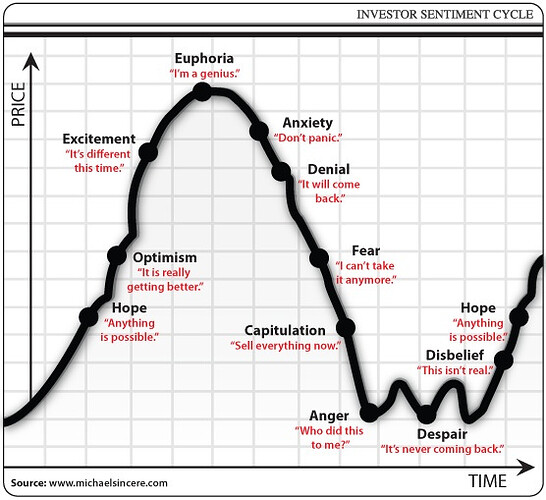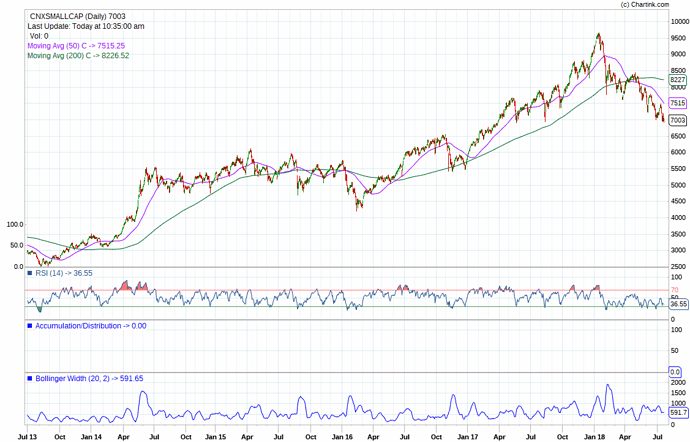‘Some Mid- & Small-caps are Looking Attractive’
Investors can earn 12-13% returns from equities over the next three years. Returns from mid-caps could be higher, though risk and volatility will also remain elevated, said Mahesh Patil, co-chief investment office, (equities), Aditya Birla Sun Life Mutual Fund. In an interview with Prashant Mahesh, Patil said investors could build their mid-cap portfolio over the next six months. Edited excerpts:
The Sensex has hit an all-time high? How are valuations looking?
The PE multiple for the market one-year forward is at fair valuation, but on a trailing one-year basis it is still expensive. However, one must note that the composition of the index itself has changed. The weightage of non-cyclical sectors has increased from 40% to 60%, and these stocks command a higher PE multiple. A couple of IT stocks, private sector banks and a large conglomerate have accounted for twothirds of the Nifty returns over the last one year. These valuations factor in upsides to a large extent. We don’t expect a rerating to happen. High-quality stocks with good return on equity (RoE), good management have become expensive, and some of the other cyclical sectors where valuations have come down. In mid- and small-cap sectors, stock valuations have come down sharply. Overall growth and earnings are improving. Post the correction, while quality trades at a premium, some mid- and small-cap stock valuations are at a level, where they are reasonable and looking attractive in a few cases.
Which parts of the market are you overweight on and what kind of returns can investors expect?
We are overweight on autos, private banks, NBFCs, consumer discretionary, media, metals and infra. You can expect 12-13% returns from equities over the next three years. However given that mid-caps have corrected, the returns from that space could be higher. Earnings growth could be much better in mid-caps, though the risk and volatility there will be much higher. They can underperform in the near term. Investors could build a midcap portfolio over the next six months.
While stocks in the IT space have run up sharply, pharma is yet to catch up. How do you play these defensive sectors?
In the technology space, the PE multiples have gone up. The growth trajectory has improved and the outlook on spends is looking better. Digital part of business is showing good growth. Earnings growth won’t come back to 15% but will settle at around 10%. Earnings growth will also be higher due to rupee depreciation. However after the recent run up and re-rating, stocks returns will not be great. In a environment where there is worry about return, this will be defensive. Many companies in the space are doing buybacks, which will be supportive. All in all it should be a good defensive play and will offer protection on downside.
The golden period of Indian pharma is over. They saw strong growth in generics space, they grew at 25-30%, it is negative now but will stabilise at 12-14%. In US markets, there is pressure on pricing, they are trying to control cost. What is happening is that pressure is easing and there is some relief, in absence of large tailwind it will be more company specific play. Return on capital employed (RoCE) of pharma sector which was 30% has come down to 10%, and it will go to 15%. So there is no tailwind to be bullish on the sector in the near term.
The stress in PSU banks continues. What is your take on the subject?
Gross NPAs of banks is around ₹9 lakh crores while the total stress in system is around ₹13 lakh crore. There is some stress in thermal power plants which will be ₹1.5 lakh crore, will be recognised in next couple of years. We don’t see further worsening than that. As growth picks up, stress will come down.
Pressure on balance sheets of PSU banks and corporate banks will continue for the next one year or so because of higher provisioning. Hence ability to lend and will be a challenge. Lot of this will have to be led by capital markets and bond markets. Private banks and NBFCs will continue to grow and take a larger market share.
How is the economy looking. Are there improvements visible on the ground?
Macros have deteriorated, but the bottomup story is looking better. High frequency indicators across consumption, investment side, services, etc there are a lot of green indicators compared to what it was six months back. Impact of GST and demonetisation is behind us, with global growth strong we have seen a uptick of numbers.
Auto sales numbers, airline traffic growth, commercial vehicles, fuel consumption, all are seeing a growth. We met a lot of companies in last couple of months across sectors and there is lot of confidence and companies are looking at positive picture in growth in FY19. Micro bottom-up story will drive the markets.
When do you think the capex cycle will revive?
On the capex side, while consumption is picking up, investment pick up will also happen as capacity utilisation have started moving up and they are 73% as of March 2018. This capacity utilisation will inch up to 80%, looking at the current growth rate. When it reaches this level, capex should happen. Propensity of corporates to invest is better as their balance sheets have improved and we have seen free cash flow generation happen over the last two years.
If growth picks up and sustains, business confidence will improve and we should see corporate capex happening in a year’s time. There have been some green shoots in sectors like steel, cement in oil and gas, where already capex plans have been announced. So that will provide the leg for GDP growth to sustain and continue to remain high at around 7.5-8%, in the coming year.



 I understand the risk on the Calls is covered and not the underlying, still it is a shock!!! You saved me from Suzlon carnage but then I got lured by the huge IV in PCJ. Made profits last month and of course this month on calls written but seems like I overstayed my welcome. regards,
I understand the risk on the Calls is covered and not the underlying, still it is a shock!!! You saved me from Suzlon carnage but then I got lured by the huge IV in PCJ. Made profits last month and of course this month on calls written but seems like I overstayed my welcome. regards,